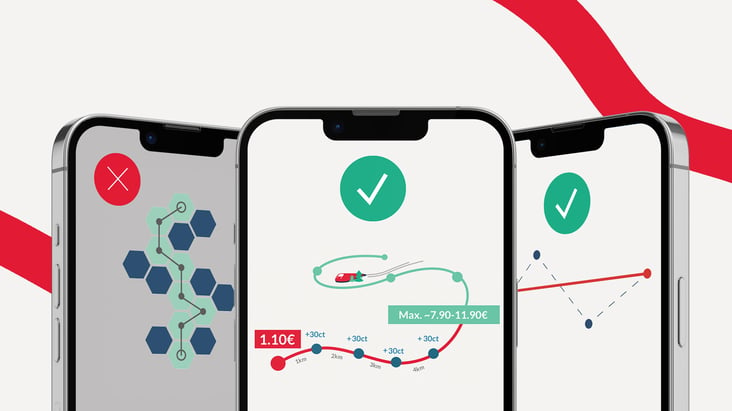
Transit agencies speak up on fare collection!
In the spring of 2021, FAIRTIQ launched a survey aimed at public transport agencies. 37 responses were received, close to 80% from North America. About 75% work for agencies with fewer than 50m boardings or unlinked trips per year, and 90% operate buses, streetcars or other surface services

What did transit agencies say?
1 - Transit fares remain simple - 60% cite flat fares
Distance-based fares were long seen as complicated as unfair. “E-fares” facilitated by smartphones are taking Germany by storm. Smartphones allow customers to check in and easily check-out, so even small bus-based systems can implement distance-based fares. Our clients in Germany are experimenting with distance-based fares to make short trips cheaper. They use both trips and daily caps to protect riders from sticker shock.
2 - Agencies are planning the future of period passes
Capping (45%) and rewards (50%) are either in place or in the plans, but only about 40% of agencies have or are considering distance-based fares.
3 - Cash is here to stay: 80% of respondents
Mobile ticketing cannot meet every customer’s needs but can complement legacy fare collection. However, ease of use can convince users who are less mobile-savvy to try out digital payments. In Switzerland, Pro Senectute, the national seniors’ association, schedules mini-classes to help seniors download the FAIRTIQ app and travel by public transit together.
4 - All-door boarding remains rare. Under 25% of respondents allow all-door boarding and only 20% of respondents have validators at all doors
All-door boarding can speed up boarding time and thus reduce dwell time, and can be implemented on specific routes or at limited stops. However, transit agencies need to design and adopt an inspection program like most agencies that have implemented BRTs and seek to speed up boarding. Once this is in place, FAIRTIQ can accelerate all-door boarding, since check-in does not require a validator.
5 - Mobile ticketing is making inroads: a quarter have it, just under half are planning it
The pandemic has highlighted the need to provide customer-friendly, contactless solutions. The top reason not to have one or plan one is capacity constraints.
6 - Cost, data and CX at the top of the wish list
What matters the most to agencies when it comes to mobile ticketing? Cost is the clear winner at 90% user experience is second at 84% and data is third at 79%. FAIRTIQ happens to be built around a quick and hardware-free implementation, rich origin-destination data for all trips, and the simplest user experience anywhere - check-in, check-out.
7 - Pilots are a real life learning lab
85% of respondents endorsed pilot projects as a way to test mobile ticketing. FAIRTIQ has a special Lab app (FTQ Lab) that makes it especially easy to pilot mobile ticketing, with no need for hardware. All that’s needed is static GTFS data and pricing rules. Setup takes weeks, maybe a few months in large agencies. Not years.
8 - Visual validation is ok
While 61% of agencies do not allow visual validation (flash passes), 75% find it acceptable at least in some cases. This is significant since eschewing hardware helps cut both capital and operating costs and removes interdependencies that limit flexibility.
9 - Equity of access is top of mind
75% found access for customers without smartphones and 65% access for unbanked and underbanked customers the top obstacles to mobile ticketing. This is a reminder that multiple complementary channels are needed to meet all needs. This also means that in many cases, legacy channels like fareboxes, paper tickets, passes and vending machines will be part of a solution to serve all customer needs as part of the mission of public service.
From a fare structure standpoint, this highlights the need to explore ways to avoid charging cash loads before providing the service and to avoid asking users to predict their usage in advance and tying up their funds in passes.
10 - Bringing it all together
This small cross-section of transit agencies provided a glimpse into current thinking about fare collection. Agencies will continue to pursue digitization and leverage new tools to provide customers with streamlined experiences and update fare structures to reflect more flexible and unpredictable travel patterns. Since the past is no longer an accurate guide to the future, it is a great time to pilot new mobile technologies and fare types.



-1.jpg?width=732&name=FTQ20_Banners5%20(1)-1.jpg)



Share